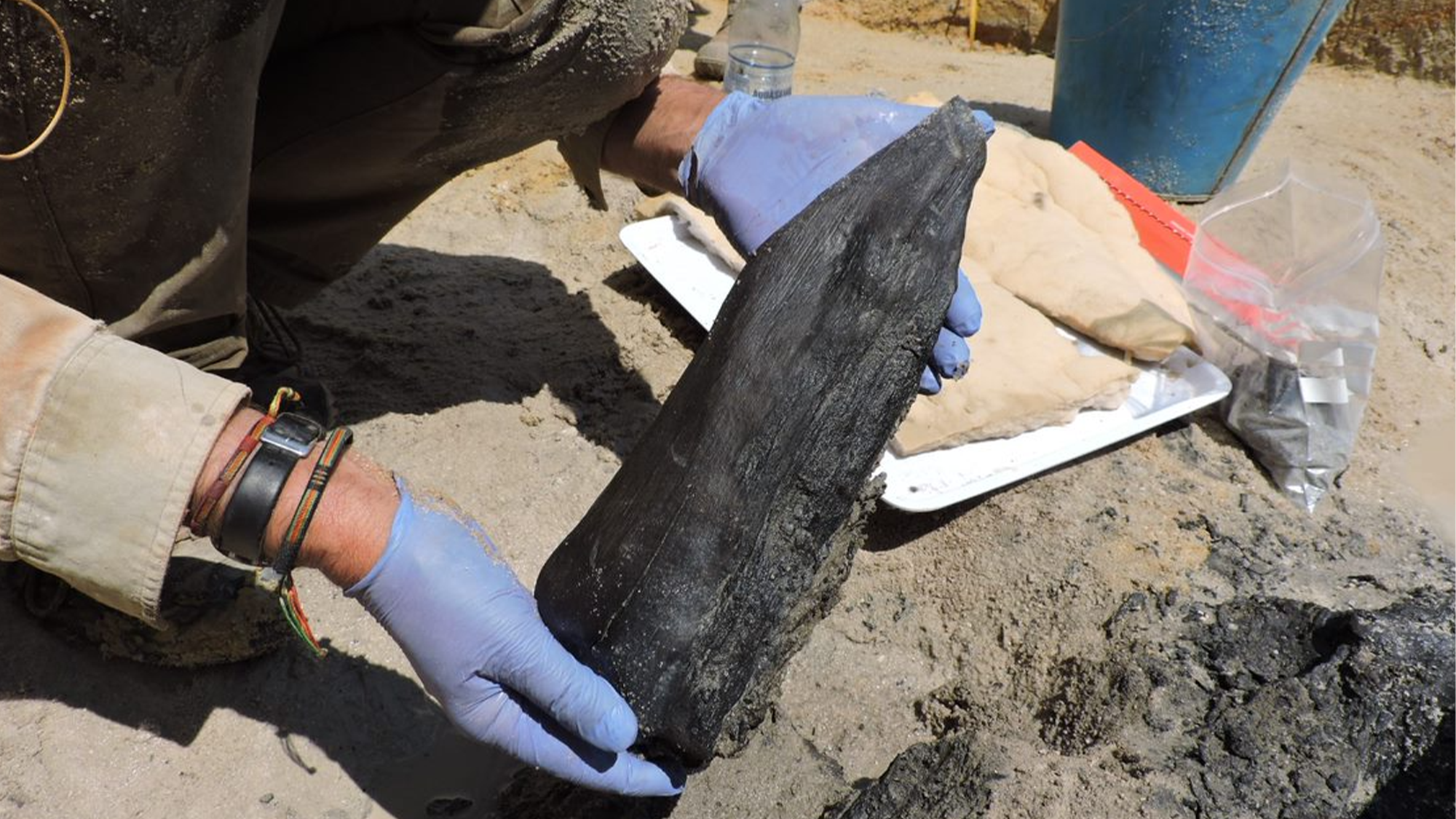

Archaeologists in Zambia have uncovered a wooden structure dating back about 476,000 years to the Early Stone Age or Pleistocene Epoch. It represents the earliest known use of wood in construction by human ancestors. The discovery at Kalambo Falls expands scientists’ understanding of the technical abilities early hominins must have had in order to shape tree trunks into large combined structures. The findings are detailed in a study published September 20 in the journal Nature. The structure itself predates the evolution of our own species (Homo sapiens) by potentially over 120,000 years.
[Related: Mysterious skull points to a possible new branch on human family tree.]
Kalambo Falls is a 772-foot-tall waterfall that sits on the border of Zambia and Tanzania and is the second highest uninterrupted waterfall on the African continent. The wooden structure found there in 2019 includes two preserved interlocking logs joined side-to-side by an intentionally cut notch. The upper log appears to have been purposefully shaped and tool marks were found on both logs and a collection of wooden tools was also found.
The find is the earliest known evidence of humans deliberately shaping two logs to fit together. The authors believe that the logs may have been used to build a raised platform, walkway, or the foundation for dwellings constructed in the region’s periodically wet floodplain. Previous research has shown evidence that wood use at this time was limited to its use for digging, as spears, and in making fire. The other earliest example of a clearly modified wood object was collected in South Africa in 1952 and dates back to the Middle Stone Age.
“This find has changed how I think about our early ancestors. Forget the label ‘Stone Age,’ look at what these people were doing: they made something new, and large, from wood,” study co-author and University of Liverpool archaeologist Larry Barham said in a statement. “They used their intelligence, imagination, and skills to create something they’d never seen before, something that had never previously existed.”

Additionally, the authors say that this discovery challenges the view that Stone Age humans were nomadic. Kalambo Falls would have provided them with a constant source of water, and the forest around them would have supplied enough wood to help them make more permanent or semi-permanent structures.
“They transformed their surroundings to make life easier, even if it was only by making a platform to sit on by the river to do their daily chores. These folks were more like us than we thought,” said Barham.
The team used new luminescence dating techniques to reveal an object’s age. It can estimate the last time that minerals in the sand surrounding the wood were exposed to sunlight. The analysis estimates that the artifact is close to half a million years old.
“At this great age, putting a date on finds is very challenging and we used luminescence dating to do this,” study co-author and Aberystwyth University geographer and luminescence dating scientist Geoff Duller said in a statement. “These new dating methods have far reaching implications – allowing us to date much further back in time, to piece together sites that give us a glimpse into human evolution.”
[Related: Humans and Neanderthals could have lived together even earlier than we thought.]
The archaeological site Kalambo Falls was first excavated in the 1950s and 1960s, long before dating techniques could allow archaeologists to understand the significance of the findings. The area is currently on a tentative list to become a UNESCO World Heritage site due to its archaeological significance.

This research is part of the Deep Roots of Humanity project, an interdisciplinary international team of researchers investigating how human technology developed in the Stone Age.
“Kalambo Falls is an extraordinary site and a major heritage asset for Zambia. The Deep Roots team is looking forward to more exciting discoveries emerging from its waterlogged sands,” said Barham.
